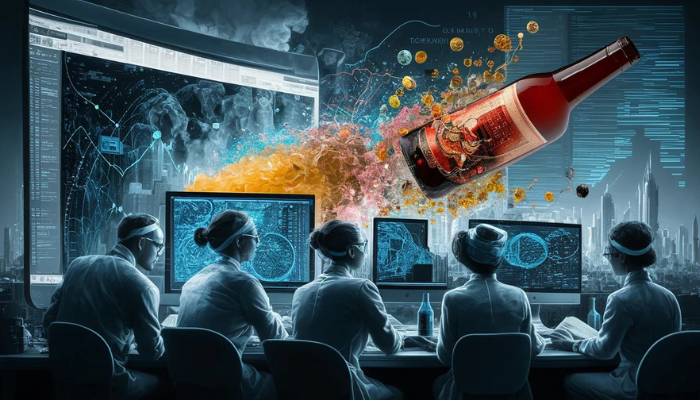Scientists turn to AI to make beer taste even better

Belgian researchers utilize artificial intelligence to enhance flavor, emphasizing that the brewer’s expertise remains crucial
Belgian beers are renowned for their diversity, quality, and heritage, whether you prefer a fruity lambic or a complex Trappist. Researchers now claim they’ve utilized artificial intelligence to enhance these brews further.
According to Professor Kevin Verstrepen of KU Leuven University, who led the study, AI could help unravel the intricate connections involved in human aroma perception.
“Beer, much like most food items, contains numerous aroma molecules detected by our tongue and nose. Our brain then synthesizes these into a singular perception. However, these compounds interact, meaning our perception of one is also influenced by the concentrations of others,” he explained.
In an article published in the journal Nature Communications, Verstrepen and his team describe their analysis of the chemical composition of 250 commercially available Belgian beers, representing 22 different styles. These styles include lagers, fruit beers, blonds, West Flanders ales, and non-alcoholic beers.
The researchers examined various properties of the beers, such as alcohol content, pH, sugar concentration, and the presence and levels of over 200 different compounds responsible for flavor. These compounds include esters produced by yeasts and terpenoids from hops, which contribute to fruity aromas.
Over a span of three years, a tasting panel consisting of 16 participants evaluated and rated all 250 beers across 50 attributes, including hop flavors, sweetness, and acidity.
Additionally, the researchers gathered 180,000 reviews of various beers from the online consumer review platform RateBeer. They discovered that while the assessment of the beers was influenced by factors like price, resulting in ratings differing from those of the tasting panel, ratings and comments related to aspects such as bitterness, sweetness, alcohol content, and malt aroma aligned closely with the panel’s evaluations.
“Even small alterations in chemical concentrations can yield significant effects, particularly when multiple components are altered,” Verstrepen noted. He added that one unexpected finding was that certain substances typically considered unappealing could be perceived positively when present in lower concentrations and in conjunction with other aroma compounds.
The team utilized machine learning, a type of AI, to construct models predicting the taste and appreciation of a beer based on its composition, using the various datasets. They applied these models to improve an existing commercial beer by adding substances identified by the models as significant predictors of overall appreciation, such as lactic acid and glycerol.
Subsequent evaluation by the tasting panel showed that these additions led to improved ratings for both alcoholic and non-alcoholic beers, enhancing attributes like sweetness, body, and overall appreciation.
Despite their limitations, such as being developed solely from datasets of high-quality commercial beers, Verstrepen suggested that the most significant use of these models could be in improving non-alcoholic beers.
However, beer enthusiasts can rest assured that new technology is not likely to disrupt the rich heritage of brewing. Verstrepen emphasized that the expertise of brewers remains crucial.
“While AI models can predict the chemical alterations that might enhance a beer, brewers are still responsible for bringing these changes to life through the recipe and brewing techniques,” he explained.


